Fertilizers for good growth and development of vines
During the growing season, a large number of branches (vines) grow on one grape bush, the length of which reaches 4-5 meters, densely covered with leaves and bunches. To renew the supply of substances in the soil for plants, it is necessary to make fertilizer for grapes.
Why is it necessary to apply fertilizers
In the spring, before planting grape seedlings, 2-4 buckets of compost or rotted compost are usually poured into the holes manure... This fertilizer, applied during planting, has a significant supply of nutrients, which are enough for 3-4 years. Formed bushes of grapes begin to bear fruit by this time. During the growing season, plants grow a large amount of green mass, which requires a lot of nutrition. Many nutrients are carried away with the vines cut and harvested in the fall.
To restore soil fertility, systematic fertilization of grapes is necessary. Top dressing of the bushes is carried out several times during the entire growing season, while it is necessary to know the rules for their introduction.
Fertilizers for grapes
To provide the vineyards with the necessary nutrition, mineral and organic fertilizers. Manure, compost, bird droppings, peat and others are used as organic materials. Organic is the preferred fertilizer. It contains all the necessary power elements. In addition, it increases biological activity, water permeability, aeration and overall soil fertility.
Mineral fertilizers are divided into simple, containing only one nutritional element (phosphorus, nitrogen or potassium) and complex. Of the simple ones, ammonium nitrate, potassium salt or potassium chloride are most often used and superphosphate... Complex (complex) consists of two or three elements at the same time. So in nitrophoske contains about 12-15% of each of the elements, and in ammophos about 10% nitrogen and 50% phosphorus.
In addition, there are ready-made complex fertilizers, which, in addition to the basic nutrients (nitrogen, potassium and phosphorus - 20:20:20), include the necessary trace elements. Such fertilizers include "Garden Mix", "Solution", "Rost-1", "Florovit", "Kristalon".
The nutrients will be well absorbed by the plants if they are introduced into the root zone. To do this, a circular groove is made around the plants at a distance of about half a meter from the base of the bush, into which top dressing is poured or poured, after which the groove must be buried.
How to fertilize grapes
The main full-fledged fertilization of grapes is carried out every two years. To do this, at a distance of 60-80 cm from the bushes, pits (trenches) are dug about half a meter deep, into which a fertilizer mixture is laid. It is better to carry out this procedure in late autumn, before laying the bushes for the winter or in the spring before bud break.
In addition, during the growing season, it is necessary to systematically apply additional fertilizing. It is important to remember that different amounts of nutrients are required during different growing seasons.
- In early spring, immediately after the opening of the grapes, the first feeding is carried out. In the grooves (you can use the holes made to shelter the bushes for the winter), under each bush, you need to add about 50 g of nitrogen fertilizers, about 30 g of potash, 40 g of phosphorus and, of course, sprinkle it with earth on top. Instead of "dry", you can make a liquid top dressing during this period with a complex soluble fertilizer (for example, "Solution" or "Master"). It should be carried out simultaneously with spring water-charging irrigation.
- Before flowering (about 10 days), it is necessary to carry out a liquid top dressing. The best option for this would be a slurry fermented for 10 to 12 days or a solution of chicken manure (diluted with water at a rate of 1: 2). Before adding, the solution must be diluted 5-7 times and add 20 g of superphosphate and 15 g of potassium salt to a bucket. One or two buckets of top dressing are consumed per bush. In the absence of manure, fertilizing is carried out with an aqueous solution of inorganic fertilizers at the rate of 40 g of nitrogen, 50 g of phosphorus and 30 g of potash under one bush. Immediately after adding nutrients, the grapes are watered abundantly.
- The next feeding is carried out during the period when the berries reach the size of a pea. A complex fertilizer is introduced, in proportions similar to the second dressing, but its concentration is much lower and should not exceed 30 g per bucket of water. This dressing is very important, since it not only allows you to increase the yield by 1.5 - 2 times, but also contributes to a better laying of fruit buds, that is, the formation of the next year's harvest.
- The last feeding is necessary during the ripening period of the berries. At this time, only phosphorus and potassium fertilizers are introduced at the rate of 50 grams each per bush. Nitrogen fertilizers cannot be applied during this period.
Fertilizers containing potassium can be replaced with wood ash, increasing the application rate by about 5 times. In addition to the easily digestible form of potassium, it contains small amounts of phosphorus and trace elements.
If, when planting grapes in a permanent place, organic fertilizers were laid in sufficient quantities in the hole, there is no need to carry out top dressing for the first two or three years.
Foliar dressing of grapes
Foliar dressing is used as a fast-acting addition to the main one - root. It is very convenient to combine it with spraying grapes against powdery mildew - add the necessary fertilizers to the solution. Processing should be carried out in the evening or cloudy weather, so that nutrients can be absorbed into the surface of the leaves before the solution dries. As well as root, this type of dressing is recommended to be carried out in several stages:
- In the spring, before flowering;
- After the formation of the ovary
- At the beginning of berry ripening
- After 10-15 days, when the berries begin to soften.
For foliar dressing, complex fertilizers are used with the addition of trace elements (manganese, boron, copper, cobalt, zinc, etc.). It is better to purchase ready-made mixtures such as "Master", "Aquarin", "Plantafol", "Novofert", "Kemira".
What to look for when fertilizing
When carrying out feeding, common mistakes should be avoided:
- Nitrogen fertilizers, as well as the use of mullein and bird droppings, can be used for foliar feeding only in spring and in the first half of summer. In later periods, nitrogen fertilization should be eliminated. Failure to comply with this rule leads to a delay in the ripening of berries and retards the development and maturation of the vine.
- Surface application of dry dressings leads to the fact that part of the nitrogen is volatilized. In addition, potassium and nitrogen, which are inactive, do not go well to the roots.
- If fertilization is not applied deeply enough, then, in combination with abundant frequent watering, this leads to the development of surface roots to the detriment of the main root system. As a result, in dry years the vineyards will suffer from a lack of moisture, and in a frosty winter with little snow, a significant part of the roots located near the surface will freeze out.
Top dressing of grapes is planned and carried out by the gardener depending on the condition of the plants and the composition of the soil, the size of the bushes and the load of the vine with fruits. Timely introduction of essential nutrients ensures good development of grapes and increased yields.In any case, two dressings are considered mandatory: in the spring (before flowering) and full fertilization of the grapes in the fall (after harvest, before sheltering for the winter).
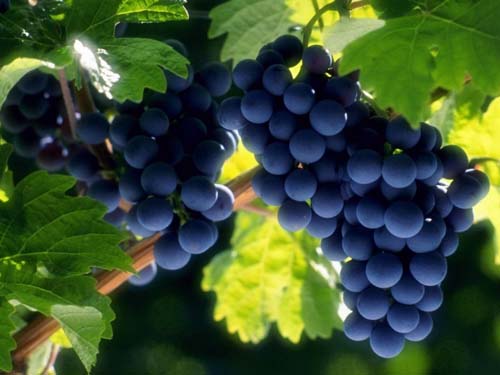
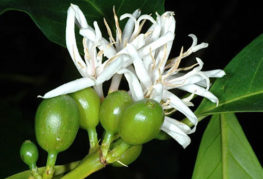
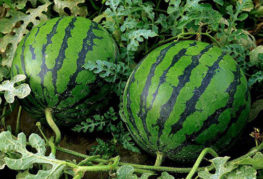

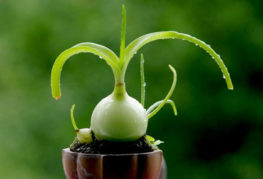
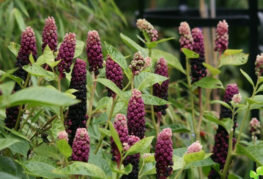
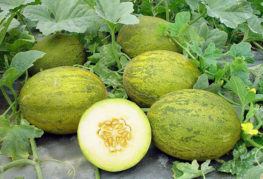
and will be published shortly.